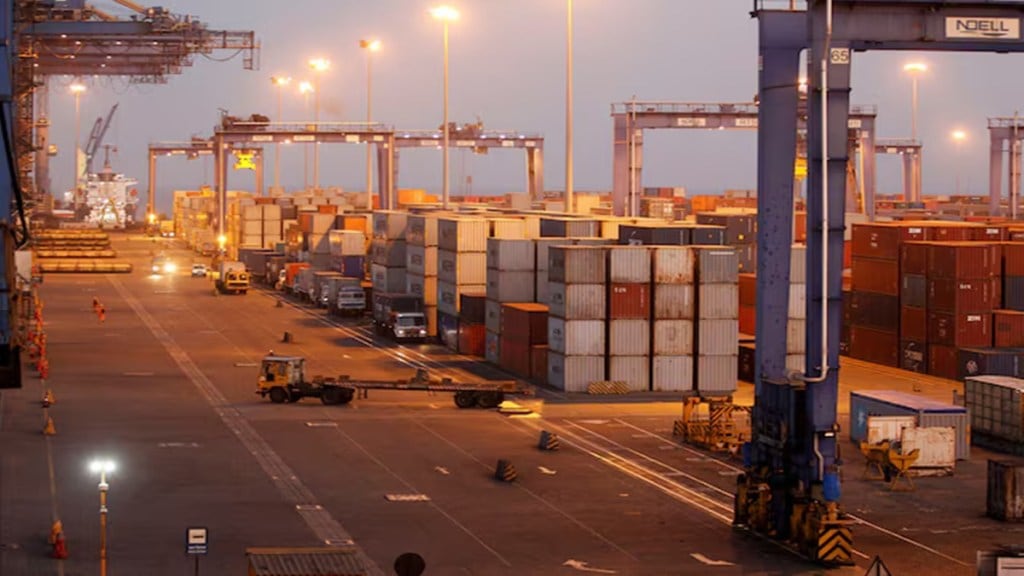By Sanjeev Sanyal & Aakanksha Arora
Four bills related to the shipping sector were listed during the winter session of Parliament. These bills mark a significant step forward in the development of India’s shipping sector — crucial not only for economic growth but also for national security.
Discussions about this sector often focus on the logistics and efficiency of ports, which are undeniably important — but ships are equally vital. India unfortunately lags behind in all the areas of shipping — ownership, shipbuilding, and flagging. India owns just 1,526 ships, with a total gross tonnage capacity of around 13 million. Of these, 487 vessels are engaged in overseas trade. India is at the 18th position with 1.2% of the global shipping capacity. Further, only 0.77% of the world’s ships are registered under the Indian flag. Additionally, India has an almost negligible presence in shipbuilding, with only 0.07% of the global market share. China dominates the industry with 46.6% of shipbuilding measured by gross tonnage, followed by South Korea at 29.2%, and Japan at 17.2%.
Not only does the lack of ships annually cost India $90 billion in shipping related payments, but it is also a big security risk. The proposed legislation is part of a wider attempt to fix the problem. The first bill is the Coastal Shipping Bill, 2024. It seeks to create a comprehensive regulatory framework for coastal trade, an area that has so far lacked cohesive legislation. Currently, mechanised vessels involved in coastal shipping are partly governed by Part XIV of the Merchant Shipping Act, 1958. The non-mechanised vessels fall under the Coasting Vessels Act, 1838. These address only their registration and do not provide a broader regulatory framework.
To promote coastal shipping, the new legislation removes the requirement for Indian-flagged vessels to obtain a general trading licence for engaging in coastal trade. It also empowers the Director-General to issue licences to foreign-flagged vessels, considering factors such as the crew’s nationality, the vessel’s construction specifications, and other relevant criteria. A key feature of the bill is the proposal to establish a national database for coastal shipping, aimed at ensuring transparency in the licensing process. Additionally, the bill introduces provisions for the compounding of various offences, streamlining regulatory compliance and enhancing the ease of doing business. Finally, it mandates the development of a strategic plan for the long-term growth of coastal shipping.
The second bill, the Merchant Shipping Bill, 2024, has also been introduced in Parliament. It will replace the Merchant Shipping Act of 1958 with the primary objective of significantly simplifying ownership and registration requirements. One of the key changes is the expansion of eligibility for vessel ownership. Under the new bill, Indian vessels can be owned not only by Indian citizens but also by Non-Resident Indians (NRIs), Overseas Citizens of India (OCIs), Indian-registered companies, and other entities designated by the government. In contrast, the 1958 Act required that ships flagged in India be 100% owned by Indian citizens or by companies incorporated under Indian law and also required that their principal place of business be located in India.
The new legislation introduces the option for registration under the Bare Boat-cum- Demise Charter (BBCD) method, allowing ships to be acquired with an upfront partial payment and the balance paid over time. This is critical for financing an expensive, long-term asset. Till now, the law required full upfront payment.
The bill also includes measures to reduce the compliance burden and promote ease of doing business such as allowing vessel registration without the need to visit Indian ports, strengthening the adjudication process, and so on. The bill has provisions to ensure India meets its obligations under various international conventions. Additionally, it extends welfare measures initiated by the Union government to cover Indian seafarers on foreign-flagged ships, which was not previously included.
The third bill is the Carriage of the Goods by Sea Bill, 2024, which is going to replace the Indian Carriage of Goods by Sea Act, 1925. Its key objectives include clarifying the legal responsibilities, liabilities, and rights of carriers and shippers, streamlining the process for handling disputes, and ensuring greater flexibility in regulations through government oversight. The final bill deals with the complex documentation of shipping activities, i.e. bills of lading. The Bills of Lading Bill, 2024, will replace the more than 168-year-old colonial-era Indian Bills of Lading Act, 1856.
Overall, the changes envisaged in these bills will radically improve the shipping ecosystem. Of course, these will have to be complemented with other measures discussed/ to be discussed in our past/future articles in this series such as classification of ships as infrastructure, creation of Indian-owned and India-based Protection and Indemnity entity, addressing the exclusion of vessels from Securitisation and Reconstruction of Financial Assets and Enforcement of Security Interest (SARFAESI) Act, 2002, and so on. Watch this space as the sector undergoes a major overhaul.
The writers are respectively member and joint director, EAC-PM.
Disclaimer: Views expressed are personal and do not reflect the official position or policy of FinancialExpress.com. Reproducing this content without permission is prohibited.

